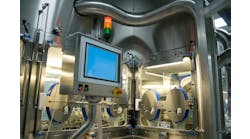In the report, “Finding the Balance: Shared Border of the Future” the US and Canadian Chambers of Commerce call attention to a “thickening of the border” between the two countries. It draws attention to the fact that, while the two countries enjoy the world’s largest and most open trade relationship, regulatory mandates in recent years have had a chilling effect on the efficiency and growth of that relationship, says Purolator USA in a release supporting the Chambers' call to action..
The two Chambers have called on the US and Canadian governments to evaluate current border clearance procedures and to take immediate action to improve efficiency by streamlining processes, eliminating exorbitant fees and addressing growing wait times. “As both the US and Canada begin to recover from the economic recession, it is imperative that both our governments do what they can to facilitate, rather than impede the flow of goods across our border,” said John Costanzo, Purolator USA president. “This report does an excellent job of calling attention to some important issues that need to be rectified going forward.”
Included in the recommendations is integration of all “trusted shipper” programs so that shippers cleared for participation in one program are not forced to participate in other programs that may be redundant. In addition, government should work to lower costs of participating in these programs, which can be as high as $100,000
The report also recommends governments take steps to reduce wait times at the border by adjusting manpower and resources to meet peak traffic times, eliminate collection of fees at the border, and by allowing greater access to pre-clearance facilities, which may be located away from the actual border at warehouses, processing centers and manufacturing facilities.
Eliminate redundancy that can occur when shipments are inspected multiple times, by various government agencies, at different stages of their transportation cycle, says the report. It cites the fact that automobiles that utilize both US and Canadian parts in their manufacture may cross the border approximately seven times during the various stages of production. In the process, these autos must endure as many as 28,000 customs and security clearances, and ensure multiple delays each time a border crossing is required.
“Our commitment to this undertaking calls attention to the serious issues that affect cross border trade,” says Purolator’s Costanzo. “Once we have identified the issues that hamper the flow of goods between the two countries, we can take steps to correct them.” Costanzo also pledged his company’s support to work with all government agencies–Canadian and US–to ensure that the border clearance process is as efficient and effective as possible.
Click to view the report Finding the Balance: Shared Border of the Future.


